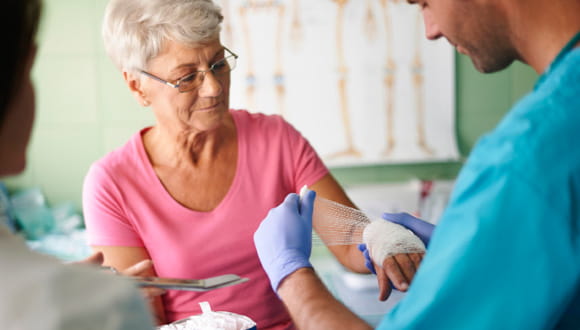For some of the estimated 29 million Americans living with diabetes, the smallest scrape can turn into dangerous wounds.
That's because high blood sugar damages nerves, causing leg and foot numbness. Meanwhile, blood vessel narrowing and hardening reduces the amount of oxygen circulated throughout the body to aid healing. (Related: 7 Reasons to Stop Type 2 Diabetes in Its Tracks)
“Understanding your diabetes risk and knowing diabetes symptoms are critical to preventing complications triggered by the disease,” says Nancy Kibbe, a clinical manager at Houston Methodist. “I encourage everyone to become aware of his or her family history of diabetes and to get checked for the condition on a regular basis.”
Are you at risk for diabetes?
The most common diabetes symptoms include:
- Frequent urination
- Extreme fatigue
- Blurry vision
- Unexplained weight loss
- Slow-healing cuts and bruises
Watch for warning signs of nonhealing wounds
Diabetes accounts for about 60% of lower-limb, noninjury-related amputations in adults, according to the CDC.
This means people with diabetes should monitor their health and get care for the smallest wounds, especially those on the feet.
Warning signs of nonhealing wounds include:
- Persistent pain near the wound
- Discoloration of the wound’s edges
- Increased wound drainage
- Wound redness or swelling
How to help wounds heal
Advanced wound care treatments include:
- Compression wraps
- Antimicrobial dressings
- Bioengineered skin substitutes
- Hyperbaric oxygen therapy (HBOT)
“HBOT supplies oxygen under pressure that supersaturates red blood cells and plasma with oxygen to help repair the wound, kill infection, generate new blood vessels and tissue growth,” Kibbe says.


